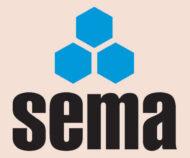Our first question this month asks about Beam Heights and the second is enquiring about using racking in extreme cold.
 Beam Height Levels
Beam Height Levels
Q. We have some LINK51M Racking in our warehouse, height is around the 5mtr, width 900mm and the beams are 2700mm so my question is what are the recommended beam height levels?
A. The beam levels in adjustable pallet racking are set to suit the nature of the operation and the goods being stored. Recommended clearances (to the side and above the loads) for counterbalance, reach and very narrow aisle trucks are given in the SEMA Code of Practice for the Use of Static pallet racking. You can get a free copy of this code via the SEMA website using the following link: www.sema.org.uk/product/code-of-practice-for-end-users-of-apr-free-complimentary-copy.
The load that the rack can carry depends upon many factors such as the duty of the rack components (beams, uprights, bracing etc.) but also the position of the beams. So, once you and your supplier have decided on the appropriate beam levels for your installation, you will need to get a suitable load notice from your rack supplier. There is a video on the SEMA website that gives more information about the load notice – see the following link: www.sema.org.uk/load-notices
Racking Used in Extreme Cold
Q. I am looking at storing products on racking shelves in a warehouse where the temperature is -60 deg.C.
The pallets will weigh 650kg. I expect at these temperatures the racking is a specialised installation at the metal will become more brittle.
Please can you point me in the right direction?
A. This is likely to prove very challenging.
Most rack manufacturers have experience of supplying racking for conventional freezer stores (approximately -25°C to -30°C) and some rack manufacturers have supplied racking for stores operating at -40°C however, we are not aware of any rack manufacturers that have supplied racking to operate at -60°C.
As you rightly note steel suffers increasingly from brittle fracture problems as the temperature reduces and one of the problems here is that the steel suppliers will not guarantee the products used in rack manufacture at such low temperatures, furthermore, we are not aware of any guidance from the steel suppliers on the correct type of steel to use at these temperatures. As a result, rack manufacturers will likely decline to supply. You will probably need to employ a specialist Consultant Engineer who has appropriate qualifications and experience.
SEMA Rack Safety Awareness Inspection Courses
SEMA runs a one-day safety course on Rack Safety Awareness and Inspection. These courses are aimed at end users, giving an in-depth look at the need for inspections, how to conduct an assessment and what actions to take when this is completed. These courses are held at the SEMA headquarters in Burntwood, Staffordshire, but arrangements can be made to hold them at the delegates’ premises.
SEMA Approved Rack Inspectors Qualification
This qualification is aimed at professionals who conduct rack surveys as an integral and significant part of their duties. It involves delegates in undertaking an in-depth SEMA Course, together with an examination and practical assessment. CPD will be an important part of the qualification, demonstrating to end users that SEMA Approved Inspectors maintain a high professional standard.
SEMA Publications
SEMA has 26 publications in stock – Codes of Practice, ‘Guides’ and European documents – all of which are available to purchase online. For further information on these documents contact SEMA or visit our website, www.sema.org.uk.
SEMA




Comments are closed.